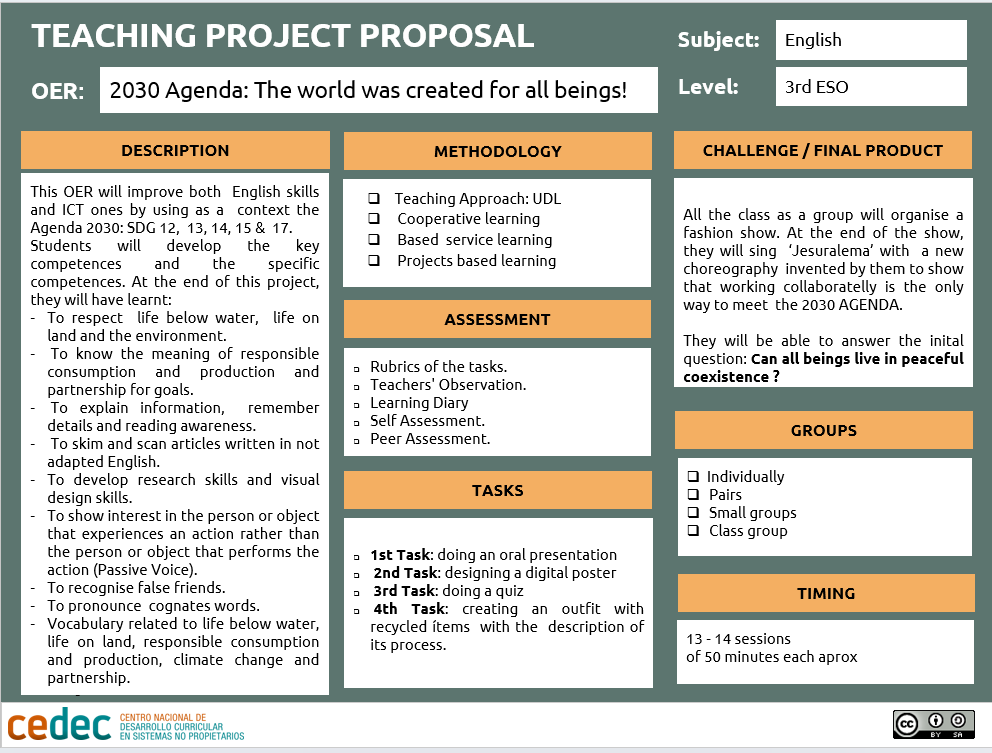Didactic Guidelines
The students are going to deal with this awesome new learning adventure in which they are going to improve both their English skills and their ICT ones by using as a context the Sustainable Development Goals (or SDGS) of the 2030 AGENDA. There are 17 sustainable development goals.
" The world was created for all beings " is part of the "2030 Agenda" projects. These projects can be done either following a pre-established order or without following it.
This project is made up of four different tasks and a final challenge whose main topic is meeting the 2030. There are activities to do individually, in pairs and in groups in order to promote inclusion.
This project apart of being totally communicative also follows the educational teaching model called STEAM that uses Science, Technology, Engineering, Arts and Mathematics as access points for guiding student inquiry, dialogue, and critical thinking. The end results are students engaged in experiential learning and persist in problem-solving. Moreover, we have added 'LANGUAGE', so we will call it STELAM (Science, Technology, Engineering, Language, Arts, Mathematics)

This project is part of a set of projects designed to cover all the learning standards of the English language curriculum of Secondary Compulsory Education which are published at the BOE (March 29th 2022), pages 143 - 154. With this project you will be able to let your students be autonomous learners and guide them through their learning process.
We strongly recommend to work with them through daily aims to get to the end of the project and accomplish each challenge successfully. This means at the beginning of each lesson you should take five minutes to check where your students are and to tell them where you would like them to get at the end of each task.
Each project is student-centred and has several areas of interest:
- In each project, students have to accomplish a task, in order to learn by doing.
- In each task, they have to collaboratively design a product. They are expected to actively work with information and communication technologies. There should be a portfolio to show all their knowlegde along this set of tasks.
- Students also have to complete a learning diary, using a sharing document ( different tips are offered to the students) at the end of each task.
Summing up, they are going to work on all the contents of the syllabus of their level with a project-based learning orientation.